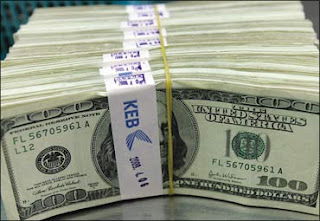Mahabalipuram art can be divided into four categories : open air bas - relief, structured temples, man-made caves and rathas ('chariots' carved from single boulders, to resemble temples or chariots used in temple processions). The famous Arjuna's Penance and the Krishna Mandapa, adorn massive rocks near the centre of the village. The beautiful Shore Temple towers over the waves, behind a protective breakwater. Sixteen man-made caves in different stages of completion are also seen, scattered through the area.
History
The temples of Mamallapuram, built largely during the reigns of Narasimhavarman and his successor Rajasimhavarman, showcase the movement from rock-cut architecture to structural building. The mandapas or pavilions and the rathas or shrines shaped as temple chariots are hewn from the granite rock face, while the famed Shore Temple, erected half a century later, is built from dressed what makes Mamallapuram so culturally resonant are the influences it absorbs and disseminates.
All but one of the rathas from the first phase of Pallava architecture are modelled on the Budhist viharas or monasteries and chaitya halls with several cells arranged around a courtyard. Art historian Percy Brown, in fact, traces the possible roots of the Pallavan Mandapas to the similar rock-cut caves of Ajanta and Ellora. Referring to Narasimhavarman's victory in AD 642 over the Chalukyan king Pulakesin II, Brown says the Pallavan king may have brought the sculptors and artisans back to Kanchi and Mamallapuram as 'spoils of war'.
Temples in Mahabalipuram
There are, or rather were, two low hills in Mahabalipuram, about 400m from the sea. In the larger one, on both sides, there are eleven excavated temples, called Mandapas, two "open air bas reliefs", one of which is unfinished, and a third enclosed one. Out of a big rock standing free nearby there is a "cut out" temple, called a "Ratha". This type is unique to Mahabalipuram.
Out of the other hill, much smaller and standing about 200m to the south, are fashioned five more rathas, and three big sculptures of a Nandi, a Loin and an Elephant. On the top of the bigger hill there is a structural temple, and a little distance the magnificent beginnings of a Vijayanagar Gopura and also survivals of what is believed to be a palace.
Shore Temple
Perched on a rocky outcrop, it presides over the shoreline, serving, as Percy Brown puts its, 'a landmark by day and a beacon by night'. Designed to catch the first rays of the rising sun and to illuminate the waters after dark, the temple ended up with an unusual lay-out. As the main shrine faces the sea on the east, the gateway, the fore count and the assembly hall of the Shore Temple all lie behind the sanctum.
Unusual, too, is the fact that the temple has shrine to both Shiva and Vishnu. The main sanctum and one of the two lesser ones on the west are dedicated to Shiva. The enclosing wall has a series of Nandi bulls on it.
Interconnected cisterns around the temple meant that the sea could be let in to transform the temple into a water shrine. But, in recent times, a stone wall as been added to protect the shrine from the rising seas and further erosion.
Mandapas
The main hill at Mamallapuram is dotted with pillared halls carved into the rock face. These mandapas, with their graceful columns and intricate figure sculptures bear witness to the artistry of the Pallavan rock cutter. The ten pavilions at Mamallapuram, of which two are unfinished, were designed as shrine, with a sanctum and on outer hall. The shallow porticoes are adorned with exquisite sculptures of gods, goddesses and mythological figures.
The Ganesh mandapa is an active shrine even today, with the idol of the elephant-god being revered by the faithful, fourteen centuries after it was first consecrated.
Beyond the circular rock called Krishna's Butterball is the Varaha mandapa dedicated to the two avatars of Vishnu as Varaha the boar and Vamana the dwarf. The pillars of this pavilion are perhaps the earliest to display a motif that became the signature of southern architecture-the lion pilaster, where a heraldic lion support ornamental pillar. The Mahishasuramardini mandapa has the goddess Durga in bas relief, slaying a buffalo-headed demon, and the Vishnu Sayana Mandapa shows Lord Vishnu lying under the protective hood of the seven-headed serpent Adishesha.
Of the other mandapas, the Panch Pandava mandapa, that is unfinished, has a more elaborate facade. Its pillars are adorned with rearing lions springing from the capital, and the shrine is the only one surrounded by a passage which allows circumvolutions.
Rathas
The eight rathas are monolithic temples fashioned as chariots. They remain an architectural mystery, for each is apparently a faithful reproduction of a structure built of wood. In fact, even the grain of the timber beams and rafters has been simulated in stone.
Of the eight rathas, five have been named for the Pandava brothers, the heroes of the epic Mahabharata, and their shared wife, Draupadi. The largest is the Dharmaraja ratha and it sets the tone for the others. Modelled on a Buddhist vihara or monastery, it sports a square hall topped by a vaulting roof. The Bhima, Arjuna and Nakula-Sahdeva rathas are lesser copies of the Dharmaraja ratha.
The Draupadi ratha is the smallest and the quaintest. It is simple structure, fashioned as a thatched hut borned on the backs of elephants and lions. It was probably the fascimile of a portable village shrine.
The fact that many of the temples and sculptures of Mamallapuram are unfinished, points to the sudden withdrawal of patronage from rock-cut temples when King Rajasimhavarman came to power.
Thanks: pilgrimageindia & Google Pics





















































